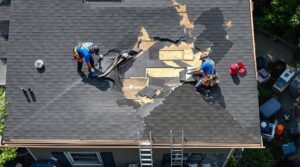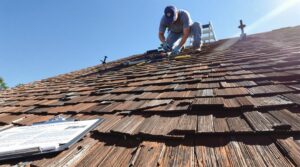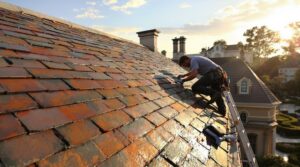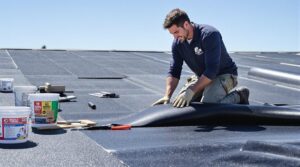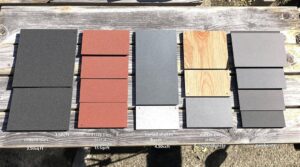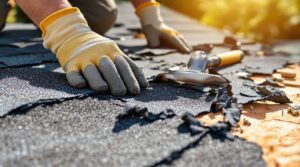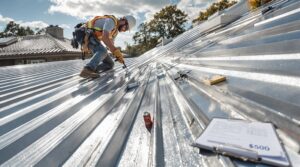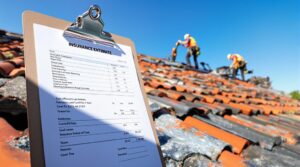Got a flat roof that's giving you headaches? Let's dive into what you need to know about fixing these unique roofing systems.
Think of your flat roof as a protective shield – it comes in several armor types. From the classic Built-Up Roofing (BUR) that's tough as nails, to the flexible EPDM rubber that bounces back from harsh weather, and the modern TPO and PVC systems that reflect heat like a mirror.
When it comes to your wallet, flat roof repairs can vary as much as weather patterns. Minor fixes might set you back just $300, while major overhauls could reach $24,000. Most homeowners typically land in the sweet spot of $1,200-$1,500 for common repairs.
What about insurance? Here's the scoop: your home insurance likely has your back, but there's a catch. You'll need to prove you've been maintaining your roof (keep those service records!), and watch out if your flat sections make up more than a quarter of your total roof area – insurers can get picky about that.
Want to protect your investment? Regular inspections and timely repairs are your best friends. Think of it like taking your car for maintenance – catch those small issues before they turn into budget-busting problems. Your flat roof might not be the most exciting part of your home, but keeping it in top shape is crucial for protecting everything underneath.
Key Takeaways
Want to keep your flat roof in top shape? Let's dive into everything you need to know about these unique roofing systems that protect countless homes across the country.
Your flat roof's health starts with its material. Think of it as choosing the right armor for your home – whether it's the battle-tested Built-Up Roofing (BUR), the flexible Modified Bitumen, the durable EPDM rubber membrane, or the energy-efficient TPO and PVC options. Each brings its own superpowers to the table.
When it comes to repair costs, you're looking at a range as varied as the problems themselves. Minor fixes might set you back just $300, while major overhauls could reach $24,000. Most homeowners typically spend between $1,200 and $1,500 for common repairs – think of it as the sweet spot for maintaining your roof's integrity.
Good news: your home insurance likely has your back when it comes to flat roof damage. But here's the catch – you'll need to prove you've been a responsible roof owner. Keep those maintenance records handy, just like you would with your car's service history. If you've got a larger flat roof area, you might want to consider specialized coverage for extra peace of mind.
Picture your flat roof as a shield that needs regular check-ups. Twice-yearly inspections and keeping it clear of debris are your best defense against notorious troublemakers like membrane blisters and pooling water. Remember, proper drainage is your roof's best friend!
While DIY might tempt you, professional repairs are your safest bet. They come with warranties, proper documentation (your insurance company will thank you), and expertise that only comes from years of hands-on experience. Think of it as the difference between treating a cold at home versus seeing a doctor – sometimes, expert care is worth the investment.
Understanding Common Flat Roof Materials and Their Benefits
Several common materials dominate the flat roofing industry, each offering distinct advantages for commercial and residential applications.
The most widely used flat roof materials include Built-Up Roofing (BUR), Modified Bitumen, EPDM, TPO, PVC, and Liquid Applied systems.
EPDM delivers exceptional roofing benefits through its durability, UV resistance, and flexibility, making it ideal for varying weather conditions.
EPDM roofing stands out for its impressive resilience, resisting sun damage while adapting to temperature changes with remarkable flexibility.
Modified Bitumen provides superior puncture resistance and typically lasts 20-30 years with proper maintenance.
Thermoplastic options like TPO and PVC excel in energy efficiency and chemical resistance, with TPO being the more environmentally conscious choice.
Built-Up Roofing utilizes multiple layers for enhanced durability, while Liquid Applied systems create seamless waterproof barriers without traditional membrane installation.
The Real Cost of Flat Roof Repairs: A Complete Breakdown
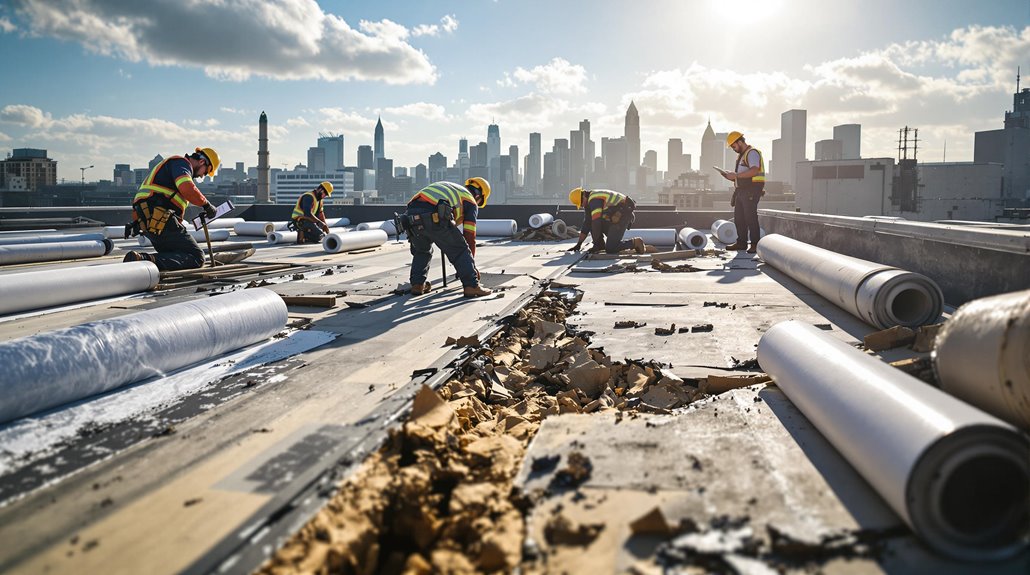
Flat roof repair costs encompass a wide spectrum of expenses, typically ranging from $1,200 to $24,000, with most property owners spending an average of $7,403.
When conducting a cost comparison between repair techniques, several factors influence the final price, including material selection, roof size, and local labor rates.
- Material costs vary considerably: TPO roofing ranges from $5-$10 per square foot, while modified bitumen costs $4-$8 per square foot.
- Removal of existing roofing materials adds $1-$5 per square foot to total costs.
- Insulation and decking repairs represent additional expenses beyond basic material costs.
- Labor rates fluctuate by region and application method, impacting overall repair expenses.
Insurance coverage may offset some costs, though policies vary in their coverage of flat roof damage.
Working with a public adjuster can increase insurance settlements by up to 574% compared to filing claims independently.
Professional Vs DIY Flat Roof Repair Methods
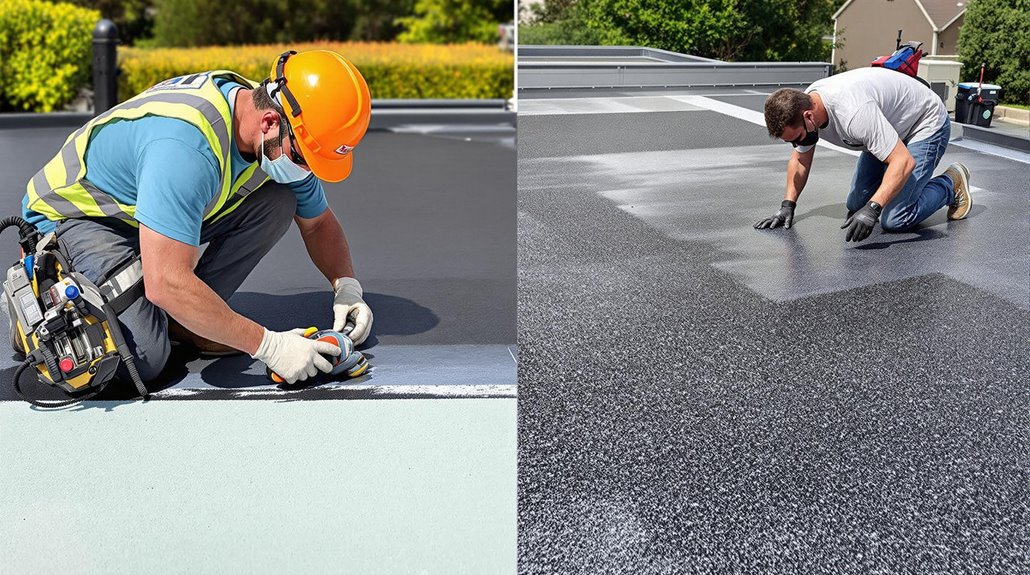
When evaluating professional versus DIY flat roof repair methods, property owners must weigh the initial cost savings of DIY against the long-term benefits of professional workmanship and warranties.
Safety considerations greatly favor professional repairs, as experienced contractors possess proper equipment, insurance coverage, and established safety protocols for working at heights.
The technical complexity of flat roof repairs demands specialized tools and skills that professionals have acquired through training and experience, while DIY attempts may lead to improper repairs and subsequent damage.
For insurance claim purposes, licensed contractors must provide detailed damage documentation and repair estimates to support successful claims processing.
Cost-Benefit Analysis
Making an informed decision between professional and DIY flat roof repair requires careful analysis of both immediate costs and long-term implications.
While DIY methods offer upfront savings on labor costs, which typically constitute 70% of total repair expenses, a thorough cost analysis reveals that professional services often provide superior repair longevity and value.
- Professional repairs include warranties and quality materials, with established supplier relationships reducing material costs from $5-9 per square foot.
- DIY repairs may require purchasing specialized equipment and risk costly mistakes requiring subsequent professional intervention.
- Professionals identify and address hidden structural issues, preventing expensive future repairs ranging from $800-$2,200.
- Insurance considerations favor professional repairs, as DIY work might affect coverage and future claim validity, potentially increasing long-term financial exposure.
Proper damage assessment and documentation is crucial for insurance claims, requiring thorough photo evidence and detailed receipts to validate repair necessity.
Safety Considerations and Risks
Beyond the financial aspects of flat roof repairs lies the paramount concern of safety protocols and risk management.
Professional contractors undergo extensive safety training and implement thorough hazard identification procedures, following OSHA guidelines and industry standards. Their expertise includes proper fall protection systems, electrical safety protocols, and weather condition assessments.
DIY repairs, while potentially cost-effective initially, present significant risks due to inexperience and inadequate safety equipment. Homeowners attempting repairs may face liability issues and insurance complications if accidents occur or repairs are improperly executed.
Professional services offer distinct advantages through established safety protocols, quality workmanship, and warranty protection. In addition, they maintain proper insurance coverage and demonstrate compliance with regulatory requirements, ensuring both worker safety and property protection during repair operations.
Public adjusters can increase insurance claim payouts by 20-50% when safety-related incidents occur during roofing projects.
Required Tools and Skills
Successful flat roof repair requires a distinct set of tools and skills that vary considerably between professional contractors and DIY practitioners. Tool selection must align with specific repair requirements, while skill enhancement focuses on mastering essential techniques for effective repairs.
- Professional roofers utilize specialized equipment like flat head shovels, utility knives, and caulking guns, complemented by their expertise in complex roofing systems and weather adaptability.
- DIY enthusiasts need basic tools including trowels, rollers, and squeegees, along with fundamental handyman skills and material knowledge.
- Physical fitness and problem-solving abilities are vital for professional contractors working on extensive repairs.
- Safety awareness, accurate measurement capabilities, and problem identification skills remain essential for both professional and DIY repair approaches.
Thorough documentation with detailed photographs of all damage locations helps maximize insurance claim settlements for flat roof repairs.
What Your Home Insurance Actually Covers for Flat Roofs
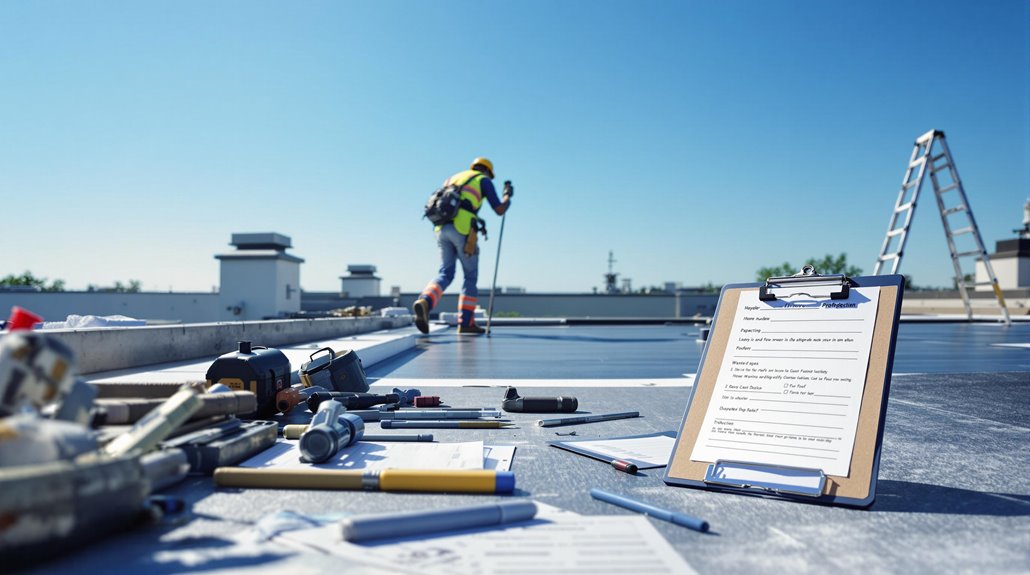
Understanding flat roof insurance coverage can be complex, as policies often differ considerably from those covering traditional pitched roofs.
Standard home insurance typically covers flat roof damage, but significant restrictions apply based on age, condition, and maintenance history.
Most policies exclude damage resulting from wear and tear or neglect, requiring homeowners to demonstrate proper maintenance through claim documentation.
If the flat portion exceeds 25-30% of the total roof area, specialist coverage is often mandatory.
Insurance providers generally require proof that the roof was in good condition before any damage occurred, including records of professional inspections and repairs.
Material selection also influences coverage eligibility, with higher-quality materials potentially qualifying for better terms and lower premiums.
Warning Signs and Common Flat Roof Problems
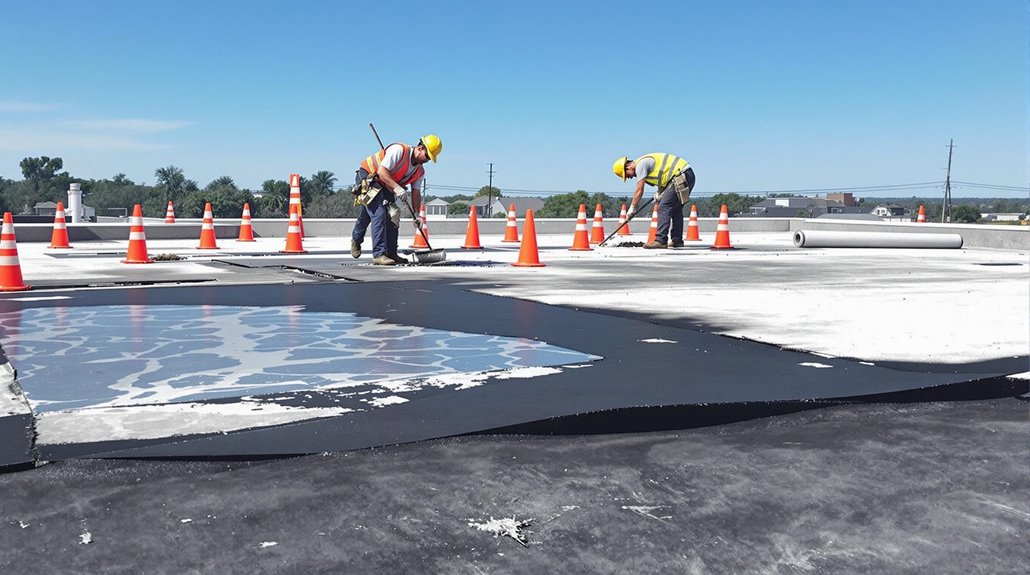
Recognizing early warning signs of flat roof problems can prevent costly structural damage and interior water infiltration. Common flat roof issues often manifest through visible deterioration and structural integrity concerns that require immediate attention. Property owners should regularly inspect for warning signs that indicate potential roofing system failure.
- Settlement cracks on walls, stained flashing, and efflorescence indicate water penetration and foundation problems.
- Membrane blisters, bubbles, and surface cracks compromise the roof's waterproofing capability.
- Standing water, blocked drains, and altered roof slopes signal drainage system failures.
- Sagging decks, persistent leaks, and damaged flashing reveal structural deterioration requiring professional assessment.
Regular monitoring of these indicators enables early intervention, preventing extensive damage and maintaining the roof's protective function.
Essential Maintenance Tips to Extend Flat Roof Lifespan
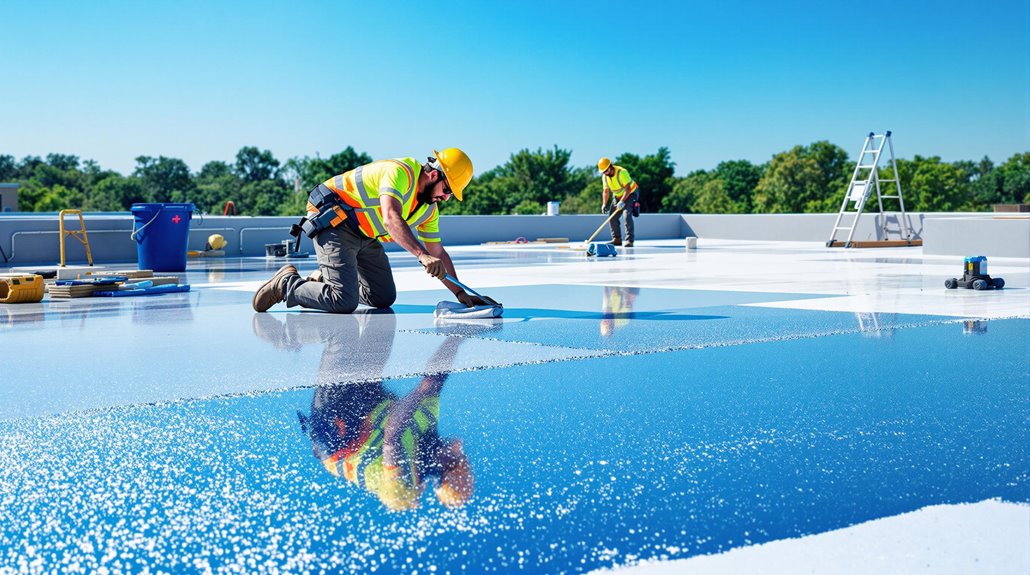
Proper maintenance practices greatly extend the functional lifespan of flat roofs while minimizing repair costs and preventing structural deterioration.
A thorough maintenance checklist should include biannual inspections in spring and fall, focusing on identifying blisters, cracks, and compromised flashings around roof penetrations.
Key preventive strategies involve regular debris removal using appropriate cleaning methods, ensuring proper drainage by keeping gutters clear, and promptly addressing water pooling issues.
Regular maintenance, including debris clearing and proper drainage management, is essential for preventing costly water damage to flat roofs.
Professional inspection of structural integrity helps detect early signs of sagging or weakness.
Additional maintenance tasks include applying reflective coatings, managing snow accumulation, and controlling vegetation growth.
Documentation of all maintenance activities creates a valuable record for tracking roof condition over time, while implementing appropriate safety measures protects maintenance personnel during inspections and repairs.
The Benefits Of Consulting A Public Adjuster For Roof Repairs
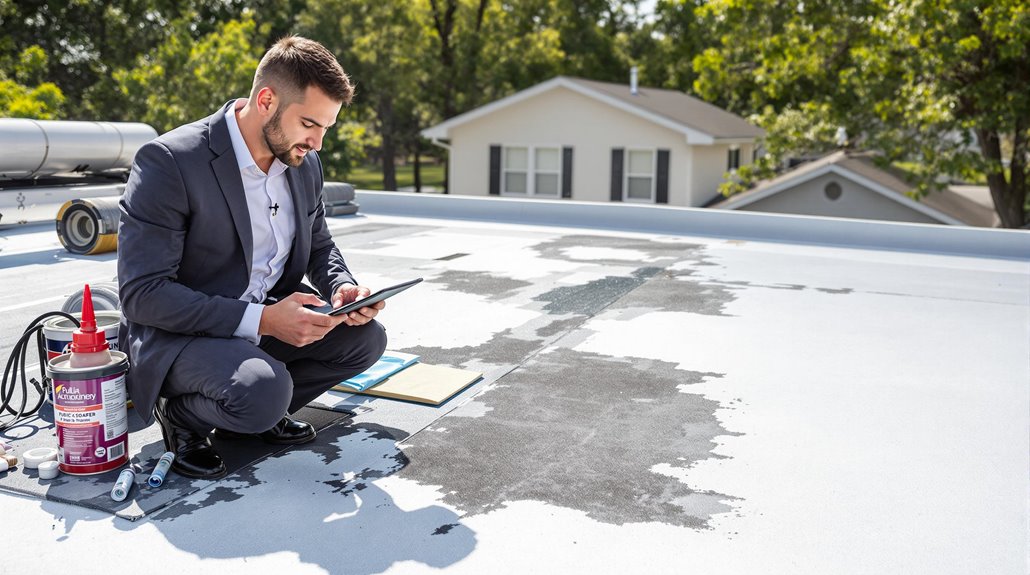
Public adjusters provide expert guidance through complex insurance claims for flat roof repairs, leveraging their specialized knowledge to document and negotiate settlements effectively.
Their objective assessment methods guarantee thorough damage evaluation, often identifying issues that might otherwise be overlooked during the claims process.
Expertise In Insurance Claims
When dealing with flat roof damage claims, consulting a public adjuster can greatly improve the likelihood of receiving fair compensation from insurance companies.
These professionals possess extensive knowledge of insurance terminology and effectively handle claim disputes through their thorough understanding of policy terms and conditions. Their expertise enables accurate documentation of damage and skilled negotiation with insurance providers.
- Conduct thorough assessments to identify all potential damage points
- Prepare detailed documentation with photographic evidence and technical reports
- Navigate complex policy language and interpret coverage limitations
- Present compelling arguments during claim negotiations using industry-standard methodologies
Public adjusters streamline the claims process while advocating for policyholders' interests, ensuring proper evaluation of damage and maximizing potential settlement amounts through their specialized knowledge of insurance industry practices.
Objective Damage Assessment
Objective damage assessment through a public adjuster transforms the roof repair process into a systematic, evidence-based evaluation. The assessment benefits include early problem detection, cost reduction, and enhanced insurance claim outcomes through detailed documentation.
| Assessment Phase | Evaluation Techniques | Outcomes |
|---|---|---|
| Initial Survey | Visual Inspection | Damage Scope |
| Technical Analysis | Moisture Detection | Material Integrity |
| Documentation | Photo/Video Evidence | Claim Support |
| Final Report | Cost Assessment | Repair Strategy |
Professional damage evaluation techniques employ industry-standard methods to identify structural issues, water damage, and material degradation. This systematic approach guarantees accurate repair cost estimates while providing thorough documentation for insurance claims. The resulting assessment delivers actionable insights for maintenance planning, budget allocation, and long-term roof preservation strategies.
Streamlined Claim Process
Consulting a public adjuster for flat roof repairs greatly streamlines the insurance claim process while maximizing settlement outcomes.
These professionals manage complex aspects of claims, including detailed damage assessments, code-mandated upgrades, and drainage issues. Their expertise in claim documentation and insurance negotiations guarantees proper handling of all necessary paperwork while advocating for the policyholder's interests.
- Conducts extensive damage evaluations to identify both visible and hidden issues
- Manages all claim documentation requirements and maintains organized records
- Facilitates communication between homeowners and insurance carriers
- Expedites temporary repairs to prevent secondary damage while negotiating permanent solutions
Professional adjusters reduce homeowner stress by handling technical complexities while guaranteeing claims are processed efficiently and settlements reflect the full scope of necessary repairs.
Higher Claim Payouts & Settlements
Public adjusters greatly increase claim payouts for flat roof repairs through their thorough understanding of insurance policies and expert assessment capabilities.
Studies indicate their involvement can result in settlements up to 747% higher than self-filed claims, primarily due to detailed damage assessment and meticulous documentation processes.
These professionals excel in claim negotiation, leveraging their extensive knowledge of insurance regulations and policy terms to secure maximum compensation.
Their expertise enables identification of damages that might otherwise go unnoticed, ensuring all legitimate repair costs are included in the settlement.
Working exclusively for policyholders on a contingency basis, public adjusters provide security in the claims process, deterring insurance companies from offering inadequate settlements.
Their ability to interpret complex policy language helps maximize coverage benefits and secure fair compensation for necessary repairs.
About The Public Claims Adjusters Network (PCAN)
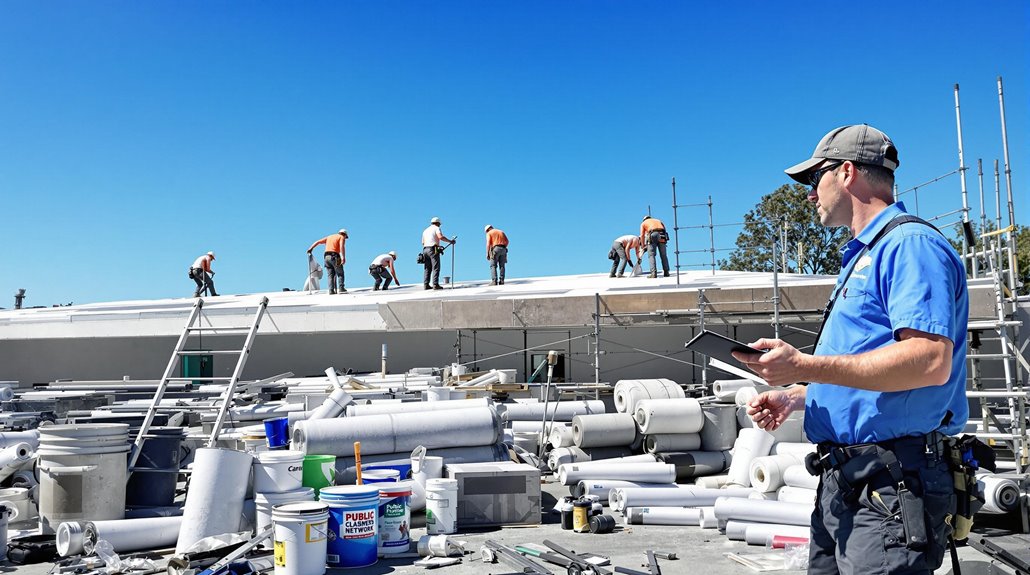
Professional insurance claim specialists form the backbone of public adjuster networks, which facilitate thorough policyholder representation across multiple jurisdictions.
These networks combine expertise in Public Adjuster Roles with sophisticated Claim Negotiation Strategies to maximize settlement outcomes for property owners, particularly in complex cases like flat roof repairs.
- Networks employ licensed adjusters who operate across 45 states and DC, ensuring compliance with local regulations while maintaining professional standards.
- Specialized expertise in specific claim types, including flat roof damage assessment and documentation.
- Independent status guarantees focus on policyholder interests rather than insurance company objectives.
- Coordinated approach enables sharing of best practices and technical knowledge across multiple jurisdictions for ideal claim resolution.
Frequently Asked Questions
How Long Does a Temporary Flat Roof Repair Typically Last?
Like a bandage on a wound, temporary solutions typically last 2-6 months, though repair longevity varies based on weather conditions, material quality, and installation expertise.
Can Flat Roofs Be Converted to Pitched Roofs, and Is It Cost-Effective?
Flat roof conversion to pitched roofs is structurally feasible with proper engineering support. While initial costs range $15,000-$50,000, long-term cost comparison shows benefits through reduced maintenance and improved durability.
What Temperature Conditions Are Ideal for Flat Roof Repairs?
Most repair materials require temperatures above 40°F, with ideal conditions between 50-85°F for proper curing. Rubber roofing specifically needs temperatures in the 50s for effective adhesion and sealing.
Are Green Roofs Possible on Existing Flat Roof Structures?
Green roofs can be installed on existing flat roofs when structural capacity permits. Assessment of load-bearing capabilities, drainage systems, and waterproofing is essential before implementing these environmentally beneficial modifications.
How Do Solar Panel Installations Affect Flat Roof Warranties?
While roofers cringe at the sight, solar panel integration frequently impacts flat roof warranties through penetrations and modifications, requiring careful review of warranty terms and professional installation compliance.
References
- https://www.karnakcorp.com/blog/what-are-the-different-options-for-roofing-materials-on-a-flat-roof
- https://idflatroof.com/flat-roof-replacement/
- https://colonyroofers.com/learningcenter/flat-roofing-materials
- https://roofingunited.com/comprehensive-guide-to-flat-roofs-repairs-facts-and-common-problems/
- https://www.iko.com/blog/guide-flat-roof-systems/
- https://www.thisoldhouse.com/roofing/21015399/3-flat-roof-types
- https://distinctiveroofing.net/blog/flat-roof-repair/
- https://www.angi.com/articles/how-much-does-flat-roof-replacement-cost.htm
- https://www.billraganroofing.com/blog/flat-roof-replacement-cost
- https://cleancut.com/blog/flat-roof-replacement-cost/
